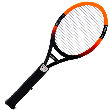Lawn pests come in all different shapes and sizes. Not all pests eat the grass or turn it brown the damage they cause can be costly and annoying to deal with.
Moles are considered a pest by anyone who has them in their yard. Even though they do not eat the grass or roots, the tunnels they dig can cause the ground to collapse and leave gaping holes in the lawn. Other pests who do eat grasses and roots can also use these tunnels for easy access to their feeding ground without being easily detected.
Crickets feed on grass and tunnel through the ground. Mole crickets leave small mounds of earth near their burrowing. They lay their eggs underground where they live most of their lives. They feed on the grass just under the surface, if left untreated, the grass will be destroyed and only bare earth will be left.
Lawn caterpillars are greenish brown or fleshy white in color. They attack the grass just above the thatch layer which will cause yellow or brown patches if left untreated.
C-shaped white grubs are identified by their three pairs of legs, bluish abdomen and brown head. They are the larvae of scarab beetles and can live from three months to three years in the soil or thatch areas. They feed on humus and grass roots. They kill the grass roots and leave the blades of grass to wither and die.
Spittlebugs are less than 1/2 inch long and have distinctive orange stripes across their wings. They lay their orange eggs in the hollow stems of the thatch. When the eggs hatch they start to suck the juice from the grass. They then cover themselves with massive amounts of frothy spittle. When a lawn is infested with them, the ground appears squishy when walked upon.
Chinch bugs are tiny. When they infest grasses, the grasses turn shades of red. Just like spittlebugs, they suck juices from the grasses, but they also release toxins that kill the grass. Chinch bugs love the warmth of the sun and they normally feed out on the open. Once infested, they can be difficult to get rid of them.
Cutworms grow up to about two inches in length and tend to be plump and grayish in color. They live just under the ground and feed primarily at night. They kill the grass by cutting the blades off at the stem.
Harvester termites build subterranean nests and can be identified by locating small mounds of soil at the surface. They feed at night or on cool days above ground. The termites cut off blades of grass and carry them back to their next to feed.
Before resorting to pesticides, consider using soapy water in their holes, waiting for them to surface and removing them by hand. This also works for getting rid of moles. If all else fails, consider putting dog excrement down the tunnels, this is a sure fire fix!

Zap Flying Bugs! Simply press the button and swing. Once the fly, wasp, mosquito, or bug touches the screen it is instantly zapped! Simple to use and totally effective. No cords to tangle; uses only two AA batteries. Check out Executioner Flying Bug Swatter today!
Grasshoppers can be difficult to get rid of as adults. The key is to kills them as larvae or babies. There are many ...
Discover MoreIf you are really interested in having a beautiful and healthy lawn it only stands to reason you will want to reduce as ...
Discover MoreIf you are thinking of planting and growing a fruit garden, then preventing fruit garden pests is going to be near the ...
Discover More2014-02-10 05:52:00
sue northmore
How do I treat the CRICKET PROBLEM of destroying the grass?
Thanks
Copyright © 2025 Sharon Parq Associates, Inc.
Comments